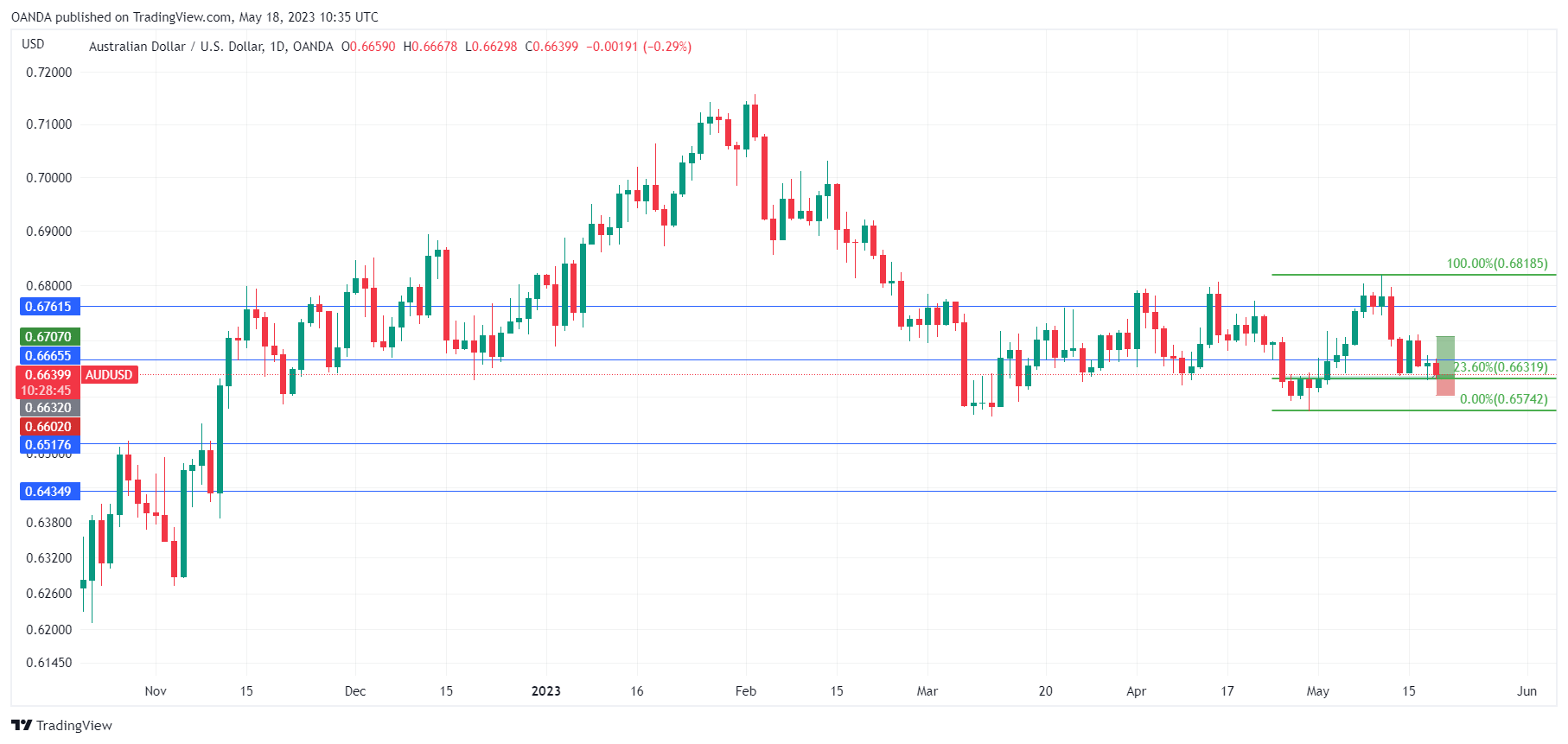- Australia’s employment change declines
- Markets lower expectations of a Fed pause in June
The Australian dollar resumed its downswing on Thursday after taking a pause a day earlier. AUD/USD is trading at 0.6641 in Europe, down 0.26% on the day.
Australian employment slips
Australia’s April employment report surprised to the downside today, sending the Australian dollar lower. Net employment fell by 4,300 in April, after a gain of 61,100 in March. The market estimate stood at 25,000. What was more disconcerting was the full-time employment decline of 27,100 after a gain of 72,000 in March. As well, unemployment jumped to 3.7% in April, up from 3.5% a month earlier.
The soft job numbers provide support for the Reserve Bank of Australia to pause its rate hikes at the June 6th meeting after shocking the markets with a 25-basis point hike earlier this month. The markets are confident of a pause, which stands at 100% probability according to the ASX RBA Rate Tracker. The central bank would like to ease up on its rate hikes and guide the economy to a soft landing, and a cooler labor market will certainly help. Still, inflation will have to cooperate and continue to head lower for the RBA to take another pause.
The US dollar is showing gains against the major currencies, as progress was reported in debt ceiling talks between Republicans and Democrats. The US has never defaulted on its debt and there’s every reason to believe that lawmakers will resolve the crisis before the June 1st deadline.
Investors continue to scale back expectations that the Fed will ease up on its rate policy. Only a week ago, the odds of a pause were 89% and a 25-bp rate hike at 11%, according to CME’s FedWatch. This has been revised to a 74% chance of a pause and a 26% chance of a 25-bp increase. The markets have mostly priced in a rate cut in December (71%), despite Jerome Powell and other members stating that no rate cuts are planned. JP Morgan came out in support of the market’s stance earlier in the week, saying that the economy was likely heading into a recession and the Fed would have to respond with rate cuts.

AUD/USD Technical
- AUD/USD is putting pressure on resistance at 0.6665. This is followed by 0.6761
- 0.6517 and 0.6434 are providing support
